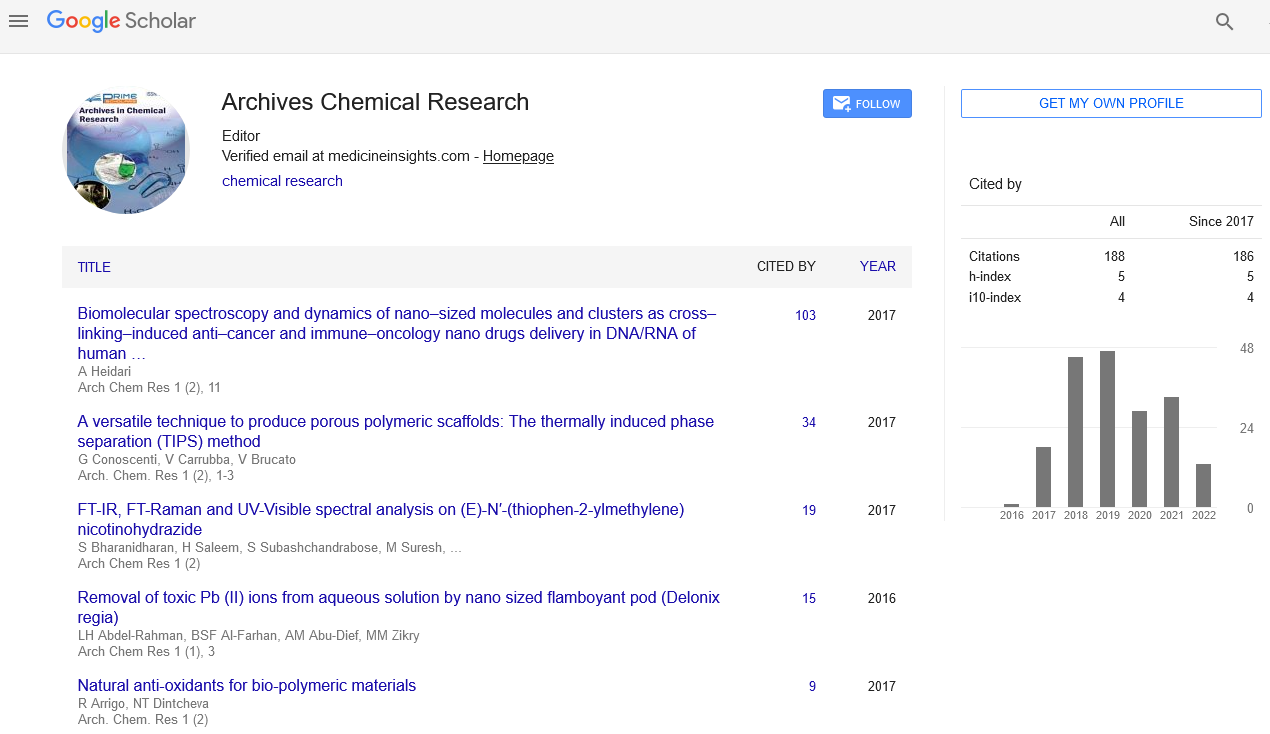Commentry - (2024) Volume 8, Issue 4
Chemoinformatics: Bridging Chemistry and Data Science
Xiao Liu*
Department of Chemical, Zhejiang University, China
*Correspondence:
Xiao Liu,
Department of Chemical, Zhejiang University,
China,
Email:
Received: 02-Dec-2024, Manuscript No. ipacrh-25-22501;
Editor assigned: 04-Dec-2024, Pre QC No. ipacrh-25-22501(PQ);
Reviewed: 18-Dec-2024, QC No. ipacrh-25-22501;
Revised: 23-Dec-2024, Manuscript No. ipacrh-25-22501(R);
Published:
30-Dec-2024, DOI: 10.35841/2572-4657.8.4.23
Description
Chemoinformatics, also known as cheminformatics or chemical
informatics, is an interdisciplinary field that combines the
principles of chemistry. At its core, neurodegeneration is
a cellular process involving the malfunction and death of
neurons. Although the exact causes can vary between diseases,
several key mechanisms contribute to neurodegeneration
across different disorders. Neurons are particularly vulnerable
to oxidative damage due to their high metabolic activity. While
inflammation is a protective mechanism in the early stages
of injury, prolonged activation can worsen the damage and
contribute to the progression of neurodegenerative diseases.
Excitotoxicity occurs when neurons are overstimulated
by excitatory neurotransmitters, such as glutamate. This
overstimulation leads to excessive calcium influx into neurons,
triggering a cascade of events that result in cellular damage
and death. In neurodegenerative diseases like excitotoxicity
is thought to play a major role in neuronal degeneration.
Mitochondria are the energy powerhouses of cells, and
their dysfunction is closely linked to neurodegeneration.
Mitochondrial mutations have been identified in several
neurodegenerative disorders. Neurodegeneration manifests in
different ways depending on the region of the brain or spinal
cord affected and the type of cells involved. Below are some
of the most common neurodegenerative diseases. It is caused
by the loss of dopaminergic neurons in the substantia a brain
region that regulates movement. The accumulation of alpha
synuclein protein. Huntington disease is a hereditary disorder
caused by mutations in the gene, leading to the production
of an abnormal huntingtin protein. Abnormal protein
aggregation in motor neurons is observed. Frontotemporal
dementia encompasses a group of disorders caused by the
progressive degeneration of the frontal and temporal lobes
of the brain. It is associated with the accumulation of tau. In
some neurodegenerative diseases, genetic mutations play a
direct role. susceptibility and environmental influences. Age
is the most significant risk factor for most neurodegenerative
diseases. The risk of developing diseases. Traumatic brain
injury has also been associated with a higher risk of developing
neurodegenerative conditions, including chronic traumatic
encephalopathy. Factors like diet, exercise, and social
engagement can influence the risk of neurodegenerative
diseases. There are no cures for neurodegenerative diseases,
and treatment options are primarily aimed at alleviating
symptoms and slowing disease progression. In medications
such as cholinesterase inhibitors and glutamate regulators
are used to manage cognitive symptoms. These treatments
provide only temporary relief and do not halt or reverse the
progression of the diseases. There is a significant need for
effective disease modifying therapies that target the underlying
mechanisms of neurodegeneration. Targeting genetic
mutations at the molecular level to correct underlying causes
of disease. Antibodies or other immune based treatments
to clear misfolded proteins or modulate inflammation in the
brain. Investigating the use of stem cells to replace damaged
neurons or support tissue regeneration. Neurodegeneration is
a complex and multifactorial process that is central to a wide
range of debilitating diseases. Despite significant advances in
understanding the mechanisms behind neurodegeneration,
much remains to be discovered about how to effectively
prevent or treat these conditions. The hope is to develop
therapies that can not only alleviate symptoms but also slow or
halt the progression of neurodegenerative diseases, offering a
better quality of life for millions of individuals affected by these
disorders. The fight against neurodegeneration remains one of
the most important challenges in modern medicine.
Acknowledgement
None.
Conflict Of Interest
The authors declare no conflict of interest.
Citation: Liu X (2024) Chemoinformatics: Bridging Chemistry and Data Science. Arch Chem Res. 8:23.
Copyright: © 2024 Liu X. This is an open-access article distributed under the terms of the Creative Commons Attribution License, which permits unrestricted use, distribution, and reproduction in any medium, provided the original author and source are credited.

